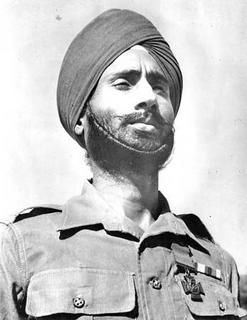Block.
This is coolbert:
During the Second World War [WW2], the German commanders proved themselves, as mentioned in many previous blog entries, as being adept at creating and commanding, with success, ad hoc units.
In another theatre of that war, [WW2], the British also proved themselves to be masters of the same game, creating effective ad hoc units.
This was in the China-Burma-India [CBI] theatre.
British units, in the early stages of the war, first in Malaya, then in Burma, and up to the border of India [Kohima and Imphal], found the Japanese Army, as was the Soviet Army, to be masters of infiltration tactics.
"infiltration - - (DOD) 1. The movement through or into an area or territory occupied by either friendly or enemy troops or organizations. The movement is made, either by small groups or by individuals, at extended or irregular intervals. When used in connection with the enemy, it infers that contact is avoided."
[movement by stealth is a hallmark of infiltration tactics. The Japanese excelled at this!!]
Infiltration tactics for which the British commanders did not seem to have an answer.
Time and again, British forces, consisting of a variety of units and types of arms and personnel, would find themselves being bypassed by infiltrating Japanese troops. This could occur either when the British were on the offensive or defensive. Often finding themselves fifty or so miles behind Japanese lines, and not EVEN REALIZING IT, British units would be forced to beat a retreat, often in disarray. This DID OCCUR, over and over.
A solution to this problem was not devised until the Royal Air Force [RAF] was able to gain control of the skies over Burma from the Japanese. At that point, aerial resupply of marooned units became possible.
The solution was to tell units to remain in place when bypassed by infiltrating Japanese troops, await aerial resupply, organize themselves into strongpoints for the defensive, and await relief from overland columns. Retreat, which was formerly the ONLY option available, was NO LONGER AN OPTION.
These strongpoints became known as "blocks" or "boxes".
"strong point - - (DOD, NATO) A key point in a defensive position, usually strongly fortified and heavily armed with automatic weapons, around which other positions are grouped for its protection."
[when a strongpoint is established, usually no retreat from such a defensive position is possible without release from higher command. The commander must stand his ground no matter what unless permission from his superior is first obtained!!]
British commanders often had a melange of units and troops at their disposal for defense of the "block".
"Melange - - a mixture often of incongruous elements"
Signallers, headquarters troops, mess waiters, "batmen" [personal valets for officers], muleteers [mules were used extensively in CBI for supply], construction troops [soldiers often having only the most rudimentary knowledge of how to use a rifle], and combat arms units of various sizes and capacities.
These troops were also of various nationalities. British, Gurkha, British Indian Army troops, and local levies [Burmese].

All were thrown together into an AD HOC unit with the mission of defending the "block".
These "blocks" became an excellent example of the verity of warfare that says, "defense is the stronger form of combat". As enunciated by Clausewitz. More can be accomplished with less and easier too by soldiers on the defensive.
The concept of the "block" was successful.
As LONG as aerial resupply WAS possible, the "block" concept worked.
[[aerial resupply was carried out almost exclusively by American Army Air Corps aircraft. This is where "Terry and the Pirates" had their start!!]
Having a strong and imaginative commander also went a long way to guaranteeing success. The senior office in charge of the "block" had to inspire his troops and command in a forceful manner. Holding such an "ad hoc" unit together and having them fight well was NOT EASY.
[having a trained, experienced, well-led combat arms unit available for the commander of the "block" often went a long way to make the defense of the "block" a success.]
Against the Japanese, troops contained with such a "block" came to quickly realize that defeat WAS NOT an option. The Japanese were NOT noted for "kindly" treatment of prisoners. Rather the OPPOSITE. Knowing this, forces within the "block" often, out of necessity, fought with exceptional vigor.
Troops with the "block" WERE able to conduct a successful defense, often causing great casualties among the attacking Japanese!!
DEFENSE does seem to be the "stronger form of combat". The "block" concept seems to say this true.
coolbert.
Labels: Burma

0 Comments:
Post a Comment
Subscribe to Post Comments [Atom]
<< Home